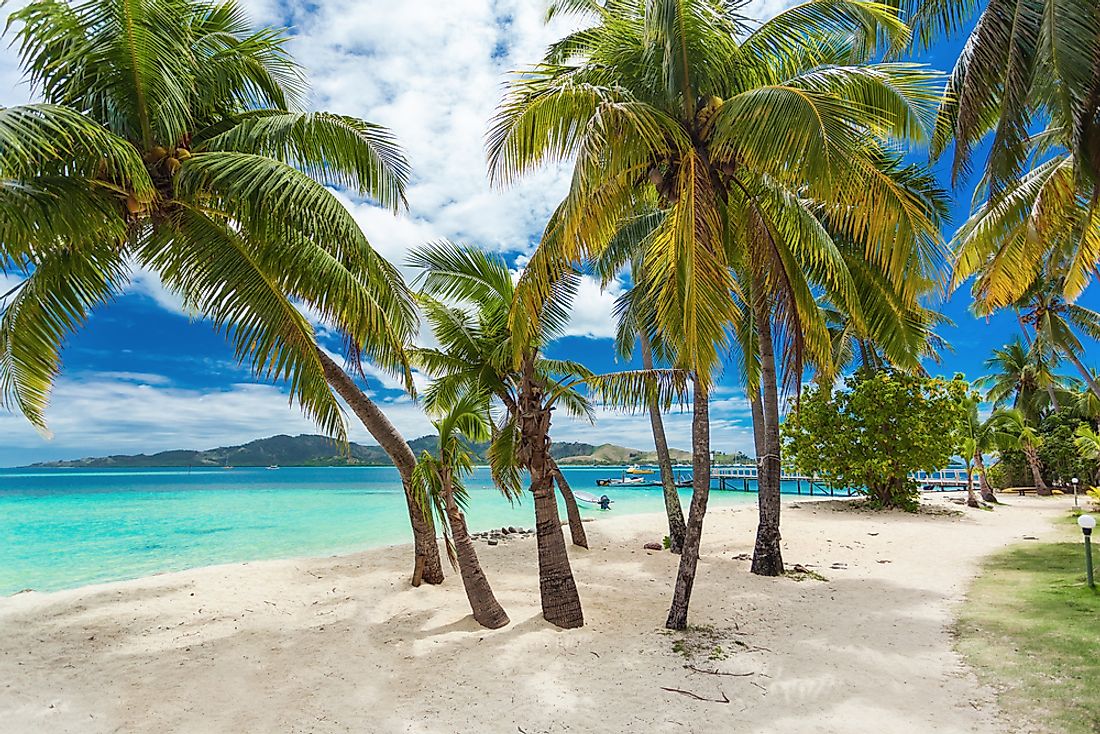Is Fiji A Country?

The Republic of Fiji is an independent country located on an archipelago in the Melanesia region of Oceania. It is located in the South Pacific Ocean, 1,300 miles northeast of the North Island. Fiji's neighbors are Vanuatu, Tonga, Samoa, New Caledonia, Kermadec Islands, and Tuvalu. The island state consists of more than 330 islands, 110 of which are inhabited. The total surface area of the country is 7,056 sq mi which is slightly smaller than the state of New Jersey and twice the size of Cyprus. The two main islands of Viti Levu and Vanua Levu are inhabited by 87% of the 890,000 people in the country while Ono-i-Lau is the farthest island. Fiji's capital city of Suva, which also serves as the principal cruise port, is located on the island of Viti Levu. Three-quarters of the country's population reside along the coast of Viti Levu or other urban centers such as Nadi.
The Government Of Fiji
Fiji declared independence on October 10, 1970, after a century of British colonial rule but remained a sovereign state within the Commonwealth of Nations until October 7, 1987, when it became a republic. Today, Fiji is administered as a parliamentary representative democratic republic with a multi-party system. The prime minister is the head of government while the president is the head of state and Commander-in-Chief. The government consists of the executive, legislature, and judiciary. Parliament appoints the president who then appoints the prime minister. The parliament of Fiji was bicameral until the 2013 constitution abolished the House of Representatives and the Senate, and created a unicameral legislature consisting of 51 members elected to serve a four-year term.
The Demography Of Fiji
The population of Fiji as at 2018 was estimated at 890,000 compared to the 837,000 in 2007. The life expectancy in the country is about 72.1 years. About 54.3% of the population consists of native Fijians of Melanesian and Polynesian ancestry. Approximately 38.1% are Indo-Fijians most of whom are descendant of Indian laborers brought to the island by colonial power in the 19th century. A small number of Chinese, Europeans and other Pacific islands minorities are also found in Fiji. The official languages of the island are Fijian, English, and Fijian Hindi. The Fijian language is spoken by 350,000 as a first language and 200,000 as a second language.
The Economy Of Fiji
Fiji is among the most developed Pacific islands despite a GDP of five trillion dollars. However, the economy is still heavily reliant on the subsistence sector. The country is a large producer of natural resources including fish, copper, hydropower, and offshore oil. Surprisingly, Fiji’s largest export is water. In 2017, the country exported $129M of bottled water. Other exports include fish, gold and raw sugar. The United States is Fiji's top trade partner.
Tourism In Fiji
Every year Fiji received about 800,000 tourists. Citizens of Australia, New Zealand, the United States, Canada, and Europeans account for 80% of the tourists. The Coral Coast, Mamanuca islands, and Derau island are the most visited places. Tourism earns the government a significant amount in taxes and creates employment. By 2020, the number of tourists is likely to outnumber the population of the country if the current trend continues.











